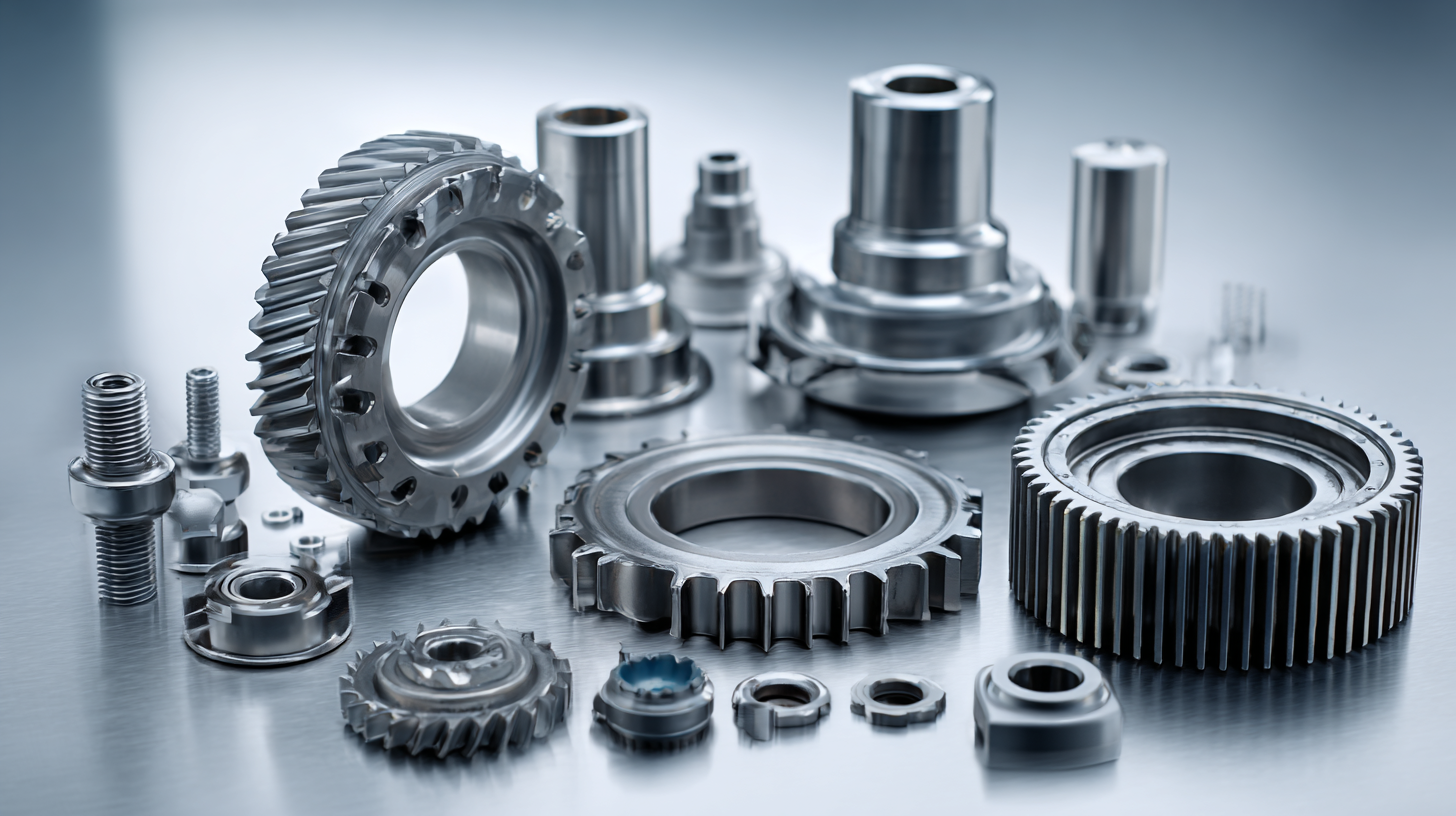Blog
How to Select the Best Con Equipment Parts for Your Global Sourcing Needs
In the rapidly evolving landscape of the construction industry, the selection of high-quality con equipment parts is crucial for enhancing operational efficiency and reducing downtime. A recent report from the Global Construction Equipment Market indicates that the industry is expected to grow at a CAGR of 7.5%, reaching USD 200 billion by 2025, driven by increasing infrastructure investments worldwide. With this growth comes a heightened demand for reliable and competitively priced parts that meet global sourcing needs. However, navigating the diverse range of suppliers and components can be overwhelming. Therefore, understanding the key factors in selecting the right con equipment parts—such as supplier reputation, product certification, and compatibility with existing machinery—becomes essential for companies aiming to optimize their procurement processes while ensuring project success.

Identifying Critical Features in Construction Equipment Parts for Sourcing
When sourcing construction equipment parts on a global scale, identifying critical features is essential for ensuring optimal performance and longevity of the machinery. First and foremost, compatibility is a major consideration. Sourcing parts that are specifically designed for your equipment brand can prevent potential operational failures and enhance overall efficiency. Understanding the specifications of your current machines, such as dimensions and material grade, will enable you to make informed decisions.

Another vital feature to evaluate is the durability of the parts. Construction environments can be harsh, and selecting components that can withstand extreme conditions is crucial. Look for parts made from high-quality materials, often specified by industry standards. Additionally, the availability of post-purchase support, such as warranties and replacement policies, plays a significant role in the selection process. Ensuring that the suppliers you consider can provide comprehensive support can save your operation time and resources in the long run.
Evaluating Supplier Reliability and Quality Assurance Measures
When selecting con equipment parts for global sourcing, the reliability of suppliers is of paramount importance. A recent report by the International Association of Sourcing Professionals highlighted that 75% of procurement officers consider supplier reliability as a top priority in their sourcing strategy. This emphasizes the need to thoroughly evaluate potential suppliers, ensuring they have a proven track record of delivering high-quality products consistently. Tools such as supplier scorecards can be employed to assess factors such as delivery punctuality, quality metrics, and responsiveness to issues.
Quality assurance measures are equally critical in the selection process. According to a study by Deloitte, organizations that implement rigorous quality control protocols achieve 30% higher customer satisfaction rates compared to those with lax measures. By assessing a supplier’s quality assurance practices, such as ISO certification and regular audits, businesses can mitigate risks and foster long-term partnerships. Investing in suppliers with strong quality assurance frameworks not only enhances product reliability but also safeguards the overall integrity of the sourcing process, ultimately leading to improved operational efficiency and reduced costs.
Global Sourcing for Construction Equipment Parts: Supplier Reliability and Quality Assurance
Understanding Global Compliance Standards in Con Equipment Parts
When selecting con equipment parts for global sourcing, understanding compliance standards is crucial. According to a recent report by the International Organization for Standardization (ISO), approximately 70% of companies report facing challenges related to varying compliance requirements across different regions. This disparity can lead to increased costs and project delays if not properly addressed. Notably, industries are increasingly adopting standardized certifications such as ISO 9001 for quality management systems and ISO 14001 for environmental management, which creates a baseline for compliance and enhances operational efficiency.
Furthermore, navigating the complexities of global compliance also involves understanding regulatory frameworks like the Machinery Directive in the European Union, which mandates that equipment must meet specific safety and performance standards. A study conducted by the World Trade Organization (WTO) revealed that adhering to such standards not only mitigates risks associated with liability but also significantly boosts market access, making it vital for international cooperation and competitiveness. By prioritizing compliance, companies can ensure that their sourcing strategies align with global best practices, ultimately facilitating smoother operations and enhanced trust with stakeholders.
How to Select the Best Con Equipment Parts for Your Global Sourcing Needs - Understanding Global Compliance Standards in Con Equipment Parts
| Part Type | Material | Compliance Standard | Supplier Region | Lead Time (Days) |
|---|---|---|---|---|
| Hydraulic Cylinder | Steel | ISO 9001 | Asia | 30 |
| Control Valve | Aluminum | ASME | Europe | 45 |
| Pump Assembly | Cast Iron | CE Marking | North America | 25 |
| Gearbox | Titanium Alloy | ISO 14001 | South America | 60 |
Cost Analysis: Balancing Quality and Affordability in Sourcing Decisions
When sourcing construction equipment parts globally, it’s crucial to perform a thorough cost analysis that balances quality and affordability. According to the Global Construction Equipment Market Report 2023, the demand for high-quality parts is projected to grow by 7% annually, driven by advancements in technology and increasing project complexities. Clients must weigh the potential long-term benefits of investing in superior components against short-term savings from lower-priced alternatives. While affordable parts may initially reduce costs, they can lead to increased maintenance and replacement expenses, ultimately impacting project profitability.
In a survey conducted by the Equipment Leasing and Finance Association (ELFA), 60% of industry professionals cited quality as their top priority when selecting suppliers, even over pricing. They emphasized that investing in high-quality parts not only enhances operational efficiency but also minimizes downtime, a critical metric since equipment downtime can cost an average of $2,000 per day. Thus, finding a balance between cost and quality requires a strategic approach, leveraging both data analytics and supplier relationships to ensure that sourcing decisions support long-term business objectives.
Leveraging Technology for Efficient Global Sourcing of Equipment Parts
In today's fast-paced global marketplace, leveraging technology to enhance the efficiency of sourcing equipment parts is crucial. According to a recent report from Statista, global sourcing has grown by over 15% in the last five years, indicating the increasing reliance of industries on international suppliers for specialized components. Advanced technologies such as Artificial Intelligence (AI) and machine learning are now being utilized to analyze market trends, streamline procurement processes, and improve decision-making, enabling companies to identify the best equipment parts that meet their specific needs.
Moreover, digital platforms like cloud-based supply chain management systems provide real-time data access, enabling businesses to monitor their sourcing activities more effectively. A McKinsey study found that companies that adopted digital solutions in their sourcing processes experienced up to a 30% reduction in procurement costs. These technologies facilitate cross-border communication and collaboration, allowing firms to swiftly adapt to market changes and manage risks associated with international sourcing. Embracing these technological advancements not only enhances sourcing efficiency but also provides a competitive edge in securing high-quality equipment parts for diverse operational requirements.

